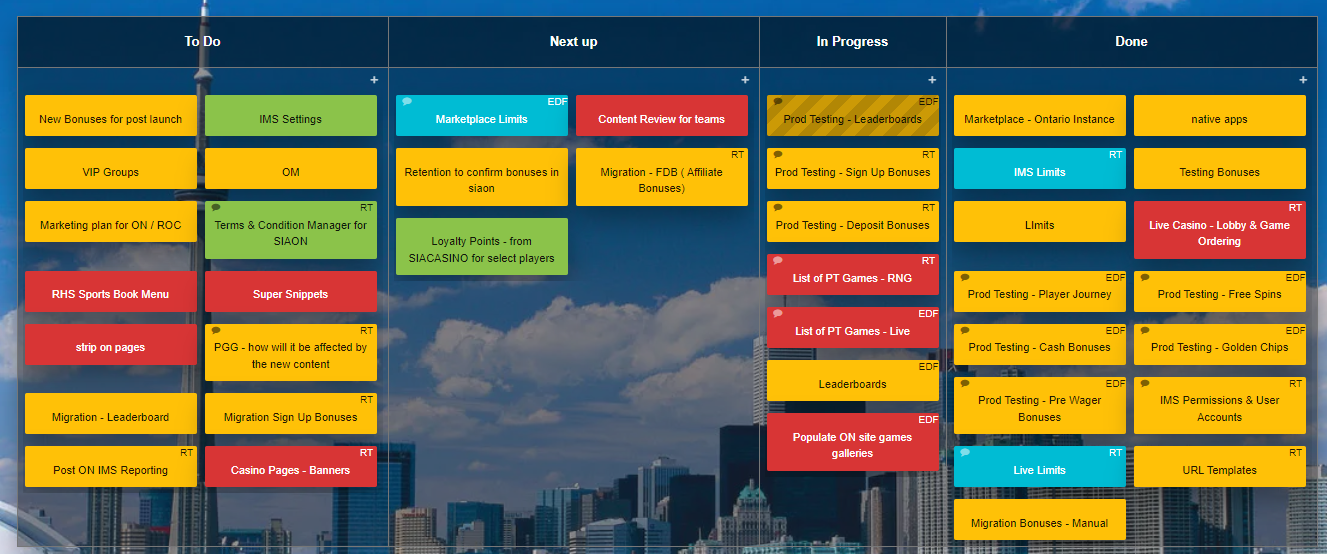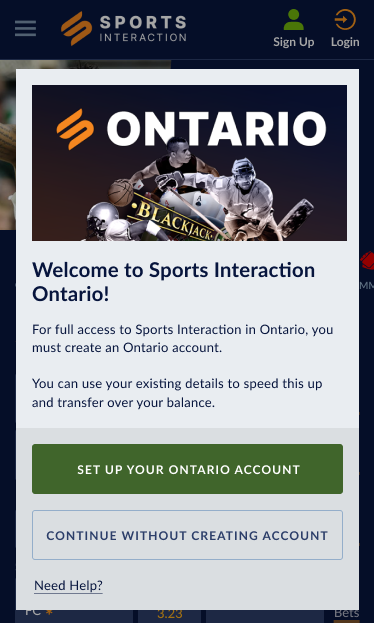Making Ontario – Stress Testing Product Development
The Challenge
Avid Gaming was given a challenge in March 2022 – we could create a whole new instance of Sports Interaction, our sports betting and casino product in four months, or we could lose our licence to operate in Ontario, the home of fifty percent of our client base.
AGCO, the gambling licence authority in Ontario, has strict guidelines about site content and what information could be gathered and stored. We had to meet those obligations, and quickly.
The White Label Temptation
We could have become compliant straight-away by moving the brand to Entain’s white label gaming platform, but winning that battle could have lost us the war. Our product was our competitive advantage - our ability to quickly respond to customer need in a way our bigger competitors couldn’t was the reason we were successful. We had worked hard to earn our reputation as the easiest product to use and the first choice for recreational bettors. We couldn’t, and wouldn’t, just give that up.
Our Four-Month Checklist
Interpret the Rules
We had to strike a balance between sticking to the letter of the law at the customers’ expense or interpreting the guidelines more broadly to ease customer friction points. Assessing the risks and rewards of that strategy was the biggest challenge.
Transfer Customers
We had to get our current Ontario customers to create new accounts and then associate those new accounts with the customers’ established customer history. There was no way to get around this.
KYC
We had to perform Know-Your-Customer (KYC) checks all over again. We could not create any account without first complying with KYC standard practice.
Geo-locate
WE had to use GeoComply, an application that would allow us to specifically locate a user inside Ontario. Our customers had to install this app and learn to use it. We were prisoners to the customer’s willingness to do that and the reliability of the app itself.
More Responsible Gaming Features
We had to add more responsible gaming features, the biggest of which was two-factor authentication. Building these features had all been in our long-term planning. Having to build them in four months was not. We fast-tracked the inclusion of timeout, deposit limit and loss-limit settings.
Asking More Questions at Sign-Up
One of the most difficult things we had to do, from a UX perspective. The sign-up page is precious. Every step involved in sign-up is a trap-door through which a customer can disappear. Having to balance the need for a clean, bare-bones signup and the need for compliance was extremely difficult. We agonised over every potential addition.
How did we do it?
Prioritisation
We took an all-hands-on-deck approach. Prioritisation of this was easy; we simply had to be compliant and continue to serve the 50% of our customers who were in danger of losing their favourite betting product
Team Adaptation
We were working well in cross-functional Agile teams. These teams were now all working towards one goal and therefore now shared a single backlog. Now we were all-hands-on-deck and all-eyes-on-the-prize.
Our Design System Came up Trumps for Rapid UX
We had been building a design system for Sports Interaction that was in a pretty good state of maturity. It wasn’t finished (‘finished’ was a forbidden word amongst our teams anyway!) but it was ready-to-roll for all of the most commonly needed components.
This allowed for rapid UX. There was no conversation about UI styles allowing laser-focus on efficient user paths. We worked out the UX of small things first to get tasks moving through development.
Cut-Throat Definition of Minimum Viable Product (MVP)
Time constraint meant that our ability to focus on the absolute minimum effort to gain maximum result was honed to a fine art
Diagramming
Every key user path had a FigJam diagram. It was at the centre of every developer or design discussion. Everyone was able to see changes and make changes, leaving no room for mis-interpretation.
It wasn’t all plain sailing.
GeoComply
GeoComply was more complex to integrate than planned, meaning we had to rely heavily on customer service walking customers through the process post launch.
Migrating Customers
We had built strong relationships with our customers and now we were asking a lot of them. They would need a separate account for this new product. They would need to trust us to transfer over all their details to a new account. In most cases they needed to give us some form of ID or proof of address. It looked like all work and no reward for them. A fun product was turning into no-fun-at-all. Again – all-hands-on-deck from our marketing and customer relations expertise. We offered transition bonuses for customers so that they could get started betting on the new product with no risk. We made sure there were no big surprises – educating ahead of time and in-situ.
Changing Rules
Twice during the build time, our licencing authority issued new versions of the compliance rules and advice. Each new version was less specific than the last, and therefore more interpretation and analysis was needed. I swiftly became a subject matter expert on these rules so that I could be a go-to person for the various teams involved – Development, Design, and Marketing.
Business Upheaval
Sports Interaction had been acquired by Entain. This resulted in major organisational and cultural change, which further resulted in talented employees looking for other opportunities. Onboarding new staff was ruled out because of the drain on existing resources. It was time to employ HR to ensure critical staff were well rewarded to stick with us through this challenge.
How it all worked out
In August 2022 we launched our Ontario product as planned. American football season kicks off in early September each year and marks the busiest and most lucrative time of the year for the business. We had hit the deadline for compliance and we had time to transition our customers for football kickoff. Within the first month 70% of our active customers had transitioned over. I took a holiday!
Takeaways
A design system is a really good idea.
As the Design leader I knew the value of design systems. After the Ontario Project, everyone across all teams knew too. The modular-mindset had well and truly come to life.
Agile is adaptable
We had to change our Agile practices, which had suited us perfectly up to this, to meet the new situation. Our solution was to adopt a ‘Tribe’ framework with various cross-functional teams reading from the same backlog and project goals.
Coaching Leadership Works
The members of the team were empowered to make decisions autonomously, and had been for years. They knew when collaboration was needed and where to find the expertise. Good communication meant that time was not spent wondering and waiting. Objectives were decisive and clear. There was a mutual respect on the team which also meant that if I needed something done rapidly there were no questions asked.







